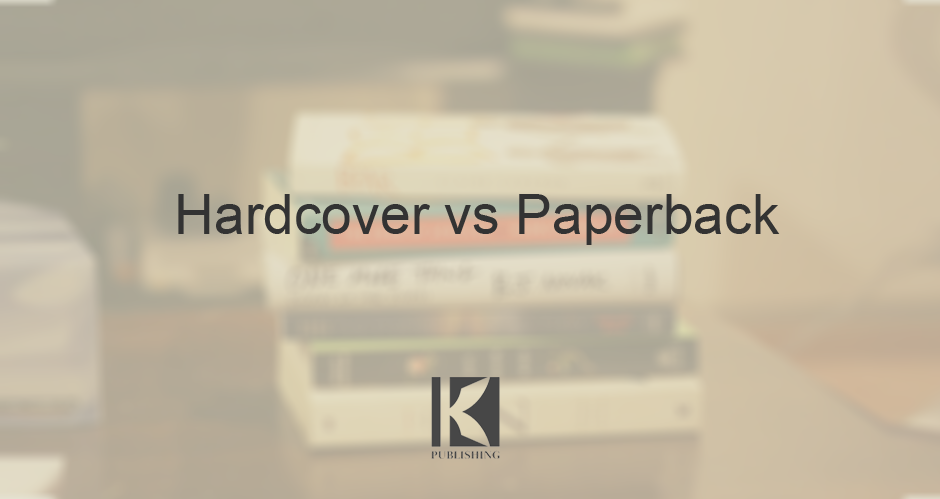When buying books at a store or online, you may have encountered two types of books, namely hardcover and paperback books, and wondered what makes these two different. You may have also thought, why are there two types of books and not just one. Well, there are some major differences between the two, and the reason that books are available in both formats is because of different author editions and readers’ preferences. Moreover, the distinction between the two different formats is important to understand when deciding which version of a book to purchase Paperback books are relatively cheaper than hardcovers. Hardcover books can sometimes be even double the price of a paperback version. But the pricing isn’t the only difference between these two types. There are many more differences, and they’re discussed in this article below to help you understand the reasons behind them
What is a paperback book?
A paperback book is also known as a softcover. It is a type of book with flexible, usually untrimmed pages that are held together by staples. Most paperbacks have a cover on both sides of the pages. Paperback versions are generally less expensive than hardcover books because they use cheaper materials to make them. Many people choose to purchase a paperback version instead of a hardcover version because of cost savings, but both versions offer similar content and quality of writing from the author. One of the differences between softcover and a hardcover edition is in the paper used to make the cover and binding. A paperback book can be thought of as an oversized magazine. In fact, today, many paperback books are published in a magazine style, with one side having text and the other side showing a photo or illustration. An advantage to paperback books is their low cost. They’re often a fourth to a fifth the cost of hardcover books. If you purchase a new hardcover book at its full retail price, it can cost $25 or more. The same book in paperback would only cost about $7 to $10. A paperback book will typically have a much longer shelf life than a hardcover book because it won’t need to be replaced due to wear and tear from use. Moreover, the lower price tag for paperbacks is because they have a less durable and thick paper cover and pages than hardcovers do. A hardcover has a stiff cover so that it stands up easily on its own when you place it on a table or shelf.
Mass-market paperbacks
The term “mass market” refers to a particular format of a paperback version. Mass-market books are also commonly known as trade paperbacks. Several styles have been used through the years, but the most common mass-market paperbacks are between 5.5 and 6 inches wide by 8 to 9 inches tall. It has a stapled spine and a rough cut cover which is slightly narrower and shorter than the typical paperback novel. A mass-market paperback was the industry standard for cheap, portable reading in the mid-20th century. Many of these were sold at newsstands and in drugstores, and they aren’t as common today with the rise of eBooks.
What is a hardcover book?
A hardcover book is bound with stiff boards covered with cloth, paper, leather, or another durable material. The spine of the book is reinforced in order to make it less likely to break when it’s opened. This also makes it possible for the text block—the pages printed on the inside front and back covers—to lie flat when opened. Hardcover books are sometimes considered more prestigious than paperback books, but that’s not always the case. Because of their price tag, they’re usually reserved for special editions or best-sellers. A hardcover binding lasts longer than a paperback and usually looks nicer and more professional. The downside to that is that it can be more expensive, especially if you want your book to have a dust jacket (a flap on the front of the book). A dust jacket may add $1 or more to the cost of each book.
Difference between hardcover and paperback
Hardcovers are more expensive
The most significant difference between hardcover books and paperback editions lies in the price and print quality. Hardcover books cost significantly more than paperbacks and rarely go on sale for less than $20, and many sell for a $30 or $40 price. Paperback books of popular titles, on the other hand, can be reduced to $10 and go as low as $6.
Hardcover books are more durable
Hardcover books tend to be sturdier and more durable than their paperback counterparts. They also look nicer on a bookshelf because they take up less space while still giving off an air of sophistication. Paperback novels, conversely, are lighter and easier to transport from place to place. They take up less shelf space at home and don’t add significantly to your luggage weight when you travel with them.
Hardcover books have better paper quality and thick covers
The quality of the paper used in paperbacks is also generally better than that of hardcovers, making them easier to read without damaging the binding or cover of the book. Hardcover books use a dust jacket and thick paper, whereas a paperback edition usually has a lower paper quality and thin paperback covers.
Paperbacks are easy to carry and flexible
Since paperback books have soft book covers, they’re pretty flexible as compared to hardcover books and easy to bend. They are also more portable and easier to carry. For people who travel a lot and read often, paperback books are the obvious choice because nobody would like to carry a heavier book in already jam-packed luggage.
Paperback vs Hardcover: which is better?
Now that you have gone through an in-depth comparison of hardcovers and paperbacks let’s get to the point where you decide to make a choice between hardcover and paperback books. Choosing between a paperback and hardcover edition of a book can be challenging. What are the advantages of each? How do you know which one to choose? Here are some things to consider when choosing between a hardcover and paperback book:
1. Consider compatibility and portability
A trade paperback is smaller than a mass-market paperback but larger than a mass-market hardcover. It’s also thicker. You can take it on an airplane or to the beach, but you can’t easily stick it in your back pocket. The hardcover edition is the thickest, making it easier to read in bed or other places where you’re not sitting straight. However, it’s also the bulkiest, so if you’re planning to carry it with you to work every day, it might get tiresome.
2. Analyse your budget
The price difference between hardcovers and paperbacks is significant — $15 or $20 versus $10 or $12 for most new books. Even so, buying the paperback edition isn’t always the cheapest way to go. Some hardcovers cost less than paperbacks, especially if they’re older books that have gone out of print or ones that were published by smaller presses that don’t spend as much on marketing and printing costs.
3. There’s no price difference with special editions
With both paperback and hardcover books, though, you have the option of getting a “gift edition” or “special edition,” which typically has a dust jacket and costs a little more than a regular copy. There’s also often a “deluxe” version of a book available with extra content at a higher price point. In this case, you’ll need to spend the same amount on paperback books as you would do on hardcover books.
FAQs
Is it worth buying hardcover books?
We’ve all heard that hardcover books are more expensive than paperbacks, but is it really worth paying extra for something that’s physically the same? Overall, it really just comes down to preference. While hardcovers can be more durable, they’re also more expensive. Hardcovers are often more gift-worthy because they feel fancier, but someone who likes paperbacks might not be willing to spend the extra money to get a hardcover version. Hardcover books are also more durable, with a stiffer spine as compared to paperback books.
Does hardcover or paperback last longer?
There are a lot of factors that affect the lifespan of books. The most common difference you will see between hardcover and paperback is the cover. Hardcovers have a stiffer, more durable cover than paperbacks. This makes them less prone to bending or breaking, but this also makes them heavier and bulkier than paperbacks. Though a book’s lifetime may be of concern for some people, it ultimately doesn’t matter much. Because in the end, paperbacks and hardcovers are both just books. You can read them. You can love them. And you can keep them for a lifetime.
How long does it take for a book to come out as a paperback?
In general, paperback books come out six months to a year before their rigid counterparts. One reason for this is financial: hardcover books are sold at a higher price point than paperbacks, so publishers can make a larger profit by selling fewer of them. Printing costs are also typically lower for hardcovers because each one gets its own separate printing plate. And if a book does well in hardcover, there’s no need to reprint it as a paperback — just sell more copies of the hardcover edition.
Wrapping up
Whether you want to purchase a hardcover or a paperback, it all comes down to your preference. Many people are avid readers and enjoy collecting hardcovers, while some love having paperbacks. Consider your budget and likeability when buying either of them so you can have a smooth reading experience. Happy reading!


